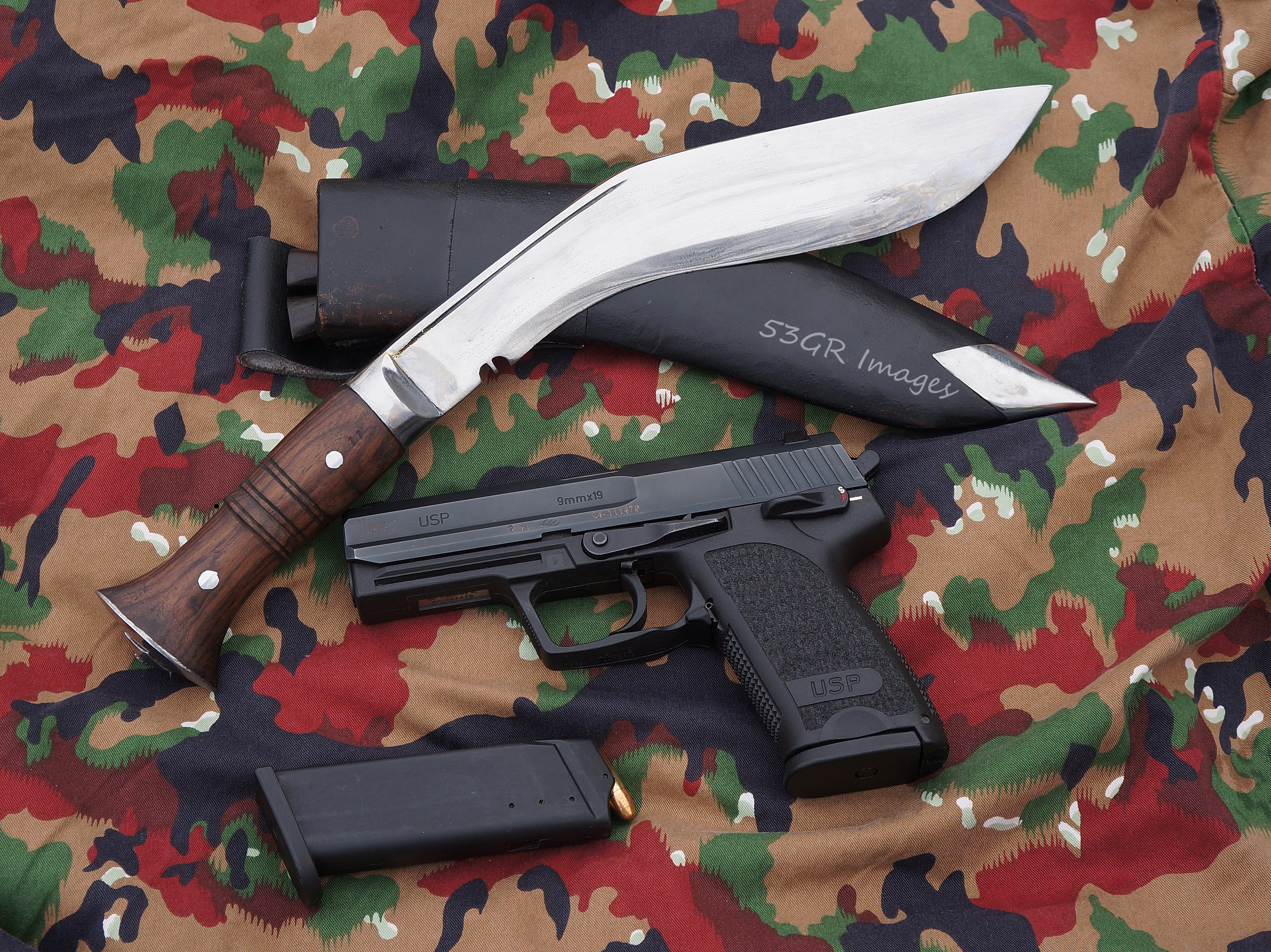I have been a fan of the Nepali Khukuri ever since I encountered it in the hands of Ex-Gurkhas in southern Iraq, in 2009. I love the design of the khukuri and use one on a regular basis. It is my constant companion when hiking in the woods, as its versatility and strength are a great asset. That said, I have always felt that there are a few improvements that could be made upon the traditional design. Enter the Historic (Improved) khukuri from Khukuri House Thamel.
I have long felt that the rat-tail tang was a weak point of the traditional khukuri design. A full tang would simply make for a more sturdy, robust blade. Granted, it would (and does) result in a heavier weapon, but that’s a sacrifice that I’m more than willing to make when it comes to an all-purpose combat and survival implement.

The Historic (Improved), or as I’ll just term it, the HI, is an excellent choice for a camping tool. It can split wood and smash bone. I have used it to chop sticks and split pressure-treated lumber. Though not quite as powerful as a hatchet, the HI is more nimble. There is a longer blade to it than a camp ax. This means that if you dull the forward curved portion (as I have done from hard use), the section of blade nearer to the handle can still be sharp and used for more delicate tasks.
Its blade is sharp enough to slice the meat off the bone if you’re dressing an animal. While it’s not the kind of blade you would want to skin an animal with, the small knife (known as a karda) included in the sheath can be further sharpened and used on animals as small as groundhogs.
As impressive as the HI is in utility, it is more so in combat potential. The weight of the khukuri lends itself to chopping. It also is an acceptable stabbing weapon. The forward curve of the blade means that you don’t have to cock you wrist forward so much when thrusting the point at an adversary. I wouldn’t consider using the khukuri to stab an opponent in the chest, though. The blade is far to fat and heavy and would not easily fit in between ribs.

Instead, if presented with an alert foe at close range (and assuming I didn’t have a loaded gun handy), I would thrust at the belly. If the man (women accounted for less than 11% of murderers in 2011) is tall enough, I might stab for his groin. A hit in either of these areas is likely to make a man double over. It’s at that moment that you use the chopping power of the khukuri, aiming for the side if the neck and down through the spinal column.
If the performance of the HI khukuri in the following video is any indication, the results would be devastating.
Remember that in the video, I am limited to a range of movement far less than that in combat. A full-power swing with the KH would be a sight to see. I’ll work on getting a deer neck to test it on.
-By Allen Cosby
Latest posts by 53gr (see all)
- H&H Medical: H Bandage and Thin H Bandage – January 2, 2020
- S&W M&P M2.0 Series – January 9, 2017
- SIG Sauer P938 – October 19, 2016

Leave a Reply